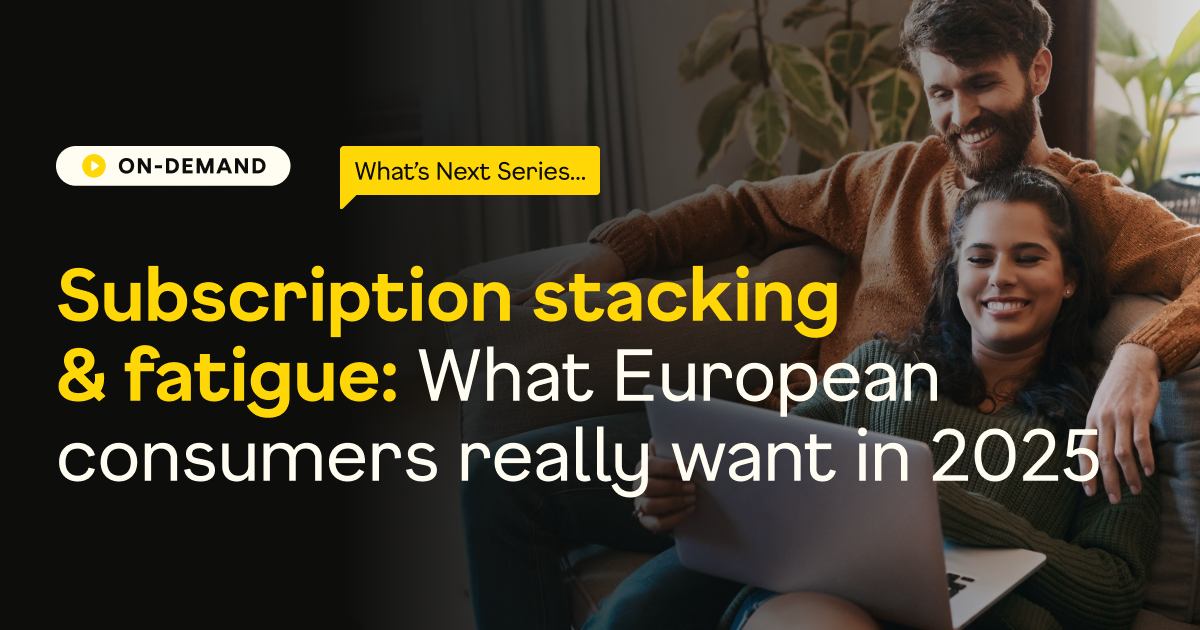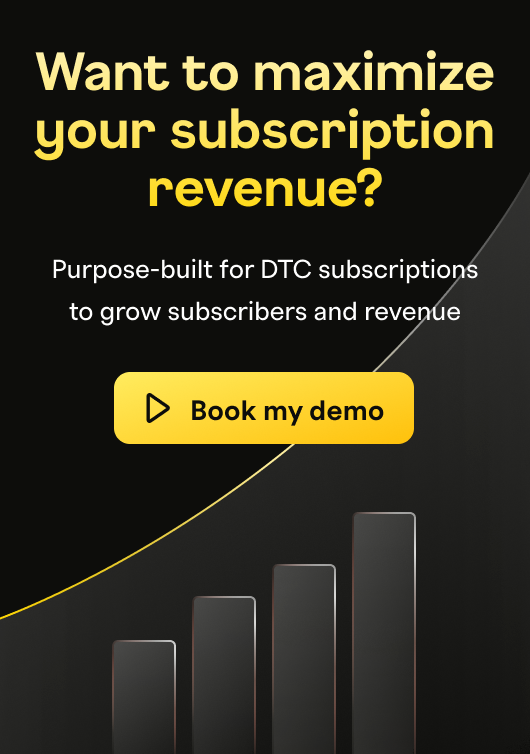Flexibility wins in Europe: Why 'pause' is the new 'cancel' for price-sensitive subscribers

As a product manager, you're likely seeing an uncomfortable trend: a rise in voluntary churn from your European subscriber base. These aren't users who hate your product; they are cost-conscious customers navigating a challenging economy.
You’re also not alone in this problem. Many companies have experienced declining acquisition and customers churning at higher rates. It’s time to change strategy in the Europe market, and here’s why:
Europe demands flexibility: 62% of subscribers rank "pause/cancellation options" as their most important subscription feature, significantly higher than the 50% in the U.S.
The "pause gap" is a major market opportunity: While 55% of all consumers prioritise the ability to pause their subscription, only 37% report currently having the option
Price is the primary win-back lever: When subscribers who switched providers were asked what could have kept them, 34% cited a "simple discount" and another 34% pointed to a "lower overall price"
Pausing works: Businesses offering a pause option saw 25% of subscribers choose to pause instead of cancelling, preserving the customer relationship
This data comes from our latest What subscribers want and 2025 State of subscriptions reports. It begs the question, “what if cancelling didn’t have to mean goodbye?” By offering a simple 'pause' or 'downgrade' at the exact moment of churn, you can preserve the subscriber relationship and safeguard your long-term customer value.
Why does flexibility matter in Europe?
It's tempting to think of churn as a single, global problem, but for this market, failing to offer flexibility is failing to meet a baseline expectation. Many factors play into why it is a must, including but not limited to:
Increased subscription options and competition
Price sensitivity
Inflation
Subscriber’s familiarity with cancelling subscriptions
Subscribers have more choices and more protections to cancel at will. Establishing and maintaining value is critical throughout the subscriber lifecycle, and it doesn’t just come with content offering. It spans the entire experience, including cancellation.
You have a short window to show value and make it easy for subscribers to come back.
Across all verticals, an average of 66% of all cancellations happen within the first 12 months of a subscription. When a price-sensitive subscriber in this critical period is met with a rigid "cancel" button, you force them off a cliff, permanently destroying any chance of future revenue. A flexible off-ramp such as:
Pausing for 1-3 months
Downgrading a plan
Offering another service or ad-free service (a popular alternative for many)
Can help preserve the account, the user data, and the marketing relationship with the customer, which buys you time to develop a win-back campaign.
How can you turn churn into retention?
Knowing why European subscribers leave is the first step. The next is to build a product experience that actively addresses it. This playbook turns the "cancel" button from a failure point into one of your most powerful retention engines.
Get personalised
Simple campaigns that stress only “come back” or “take this offer” won’t cut it. Customers expect your offers to be personalised and engaging to them. Not only is this more likely to get their attention, it also might get them to subscribe back to your service. Not only do we mean personalisation by name, but also product or pause offering.

Intercept the "cancel click"
You must stop treating the "cancel" button as a simple exit. It is a critical moment of user feedback; they are telling you something is wrong. This is the moment to intercept. Instead of a simple "are you sure?" message, the right cancellation flow allows you to ask the one question that matters: "We're sorry to see you go. Mind telling us why?" This simple survey is the key to unlocking the right retention offer.

Offer the "pause" to save the relationship
When a user selects "it's too expensive" or "I'm just taking a break," your next step isn't "goodbye." It's a 1-click "pause subscription" offer. Your pausing strategy can be multiple things:
Fixed-length pauses (1-month)
Flexible pause (custom or set on a sliding scale from 1-3 months)
Reduced servicing or pricing pause (fewer deliveries, limited access, etc.)
Minimal retention fee (slashing pricing for a month so they still stay on the platform)
Loyalty-based pausing trigger action (offering pause options exclusively to customers who have stayed with you the longest)
Holiday pausing (stop subscriptions that are affected by seasonality)
Standard pause with reactivation incentives (offer a 50% off for the next 3 months)
Our data shows that 25% of subscribers will choose this option over cancelling when it's presented to them. Giving subscribers this option not only puts them first, but helps you maintain that relationship.

What matters most?
A retention strategy is only as good as its execution. You cannot save a price-sensitive subscriber with a clumsy, five-step form to pause their account. They will abandon the process and churn anyway.
It's not just what you offer, it's how you offer it. Tools like Recurly Engage allow you to do this and more with 1-click actions. When your subscriber is presented with a "pause" or "downgrade" offer, they only have to click "accept." The change is made instantly and automatically to their subscription. It is a truly frictionless experience, and that seamless integration is what makes the conversion successful.
Real-world results from a global leader. This isn't theoretical. Global brands like Paramount+ use these exact strategies to manage their subscriber lifecycle. They leverage Recurly Engage to intercept cancellations and present dynamic, 1-click offers to at-risk users. The result? They reported a "12% uplift in saving users with billing issues and 9% lift in saving users who intend to cancel". For any product manager, a 9% reduction in voluntary churn is a game-changing metric.
Stop ending relationships, start pausing them
The European market has spoken. Subscribers are not only price-sensitive; they are demanding flexibility. They are actively telling us that a rigid, all-or-nothing cancellation policy is a key reason they leave for good.
As a product manager, you have a clear choice. You can continue to let these cost-conscious subscribers walk away permanently, or you can implement a smart, data-driven retention strategy that listens and adapts at the most critical moment.
Stop treating "cancel" as a lost customer. Turn churn into a pause, a downgrade, or a long-term, loyal customer. Want to learn more about what European customers want? Check out our latest webinar to get the inside scoop.


